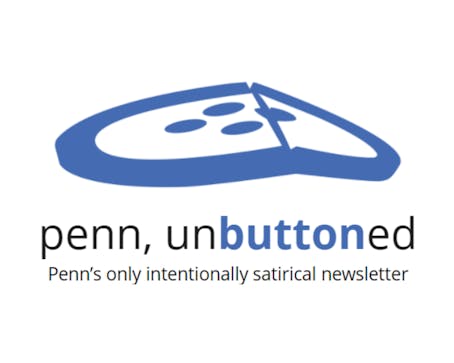College senior Danielle Rosenblatt does it five times a day while studying.
For Rachel Crystal, a College freshman, her "guilty pleasure" is best savored between classes.
They are both referring to that old staple of college life -- coffee.
No matter how, when or why, coffee seems to find its way into the lives of college students -- even more so this year than last.
The National Coffee Drinking Trends survey conducted this year by the National Coffee Association found that the percentage of 18- to 24-year-olds who drink coffee has increased from 69 percent in 2004 to 77 percent in 2005.
Moreover, 57 percent of this demographic, compared to 39 percent of the overall population, consumes coffee outside the home.
This may at least partially explain why competition between coffee retailers continues to grow on campus.
From when the first Starbucks Coffee opened on campus in 1997 to the opening of a new one in 1920 Commons in October, students are regularly provided with additional choices for coffee at Penn.
The decision to bring the chain to into 1920 Commons was made to fulfill student interest in national brands, Penn Dining Marketing Program Manager Jennifer Brennan said.
Crystal -- a self-proclaimed "Starbucks fanatic" -- said that the new Starbucks will likely be her "next-favoritest" coffee shop, after the Starbucks at 3401 Walnut St.
"Surprisingly, the stereotype that people don't like monolithic clones of McDonald's-type stores is ... so much not the case" with coffee shops, Marketing professor Robert Meyer said. "Part of the appeal [of Starbucks] is that it is the same everywhere -- you can go in and know exactly what you're getting."
But brand name is not the only thing students look for when choosing a coffee shop.
For Rosenblatt, it is "The Danielle" -- a coffee blend specially made for her by the staff -- that keeps her going back to the Bucks County Coffee at 40th and Locust streets.
"It has a lot to do with the people," Rosenblatt said, attributing her love for the cafe to her friendly relationship with the staff.
Competition between coffee retailers has evolved to the point that sometimes coffee is just not enough. Food and location are also differentiating factors.
At 36th and Walnut Streets, the coffee house originally named Xando became what is now Cosi when the chains merged in 2001. At 40th and Walnut is the Metropolitan Bakery and Cafe, an independent cafe perhaps best known for its award-winning bread. Also on the west side of campus, the homey Paris Cafe moved to 41st and Walnut from South Street three years ago because many of the owners' friends attended or worked for Penn.
"At the time, most of the cafes here weren't opened," said John Boegly, the cafe owner's brother.
Yet despite the variety of coffee houses now available on campus, with some espresso blends averaging $3 a cup, these choices may be unaffordable for students.
"Sometimes I just look at the doors and not come in," Crystal said, adding that a cup of Starbucks coffee daily can add up to a considerable sum of money.
This may partly explain why quick coffee stops such as Wawa and Dunkin' Donuts are also popular among students.
Engineering senior Maggie Shen, who grabs a cup of coffee on her way to class every day, favors Wawa for its "pretty cheap price." For students like Shen, Wawa coffee is simply a convenient source of caffeine -- at any hour of the day. Wawa is also a favorite for students like Rosenblatt, who enjoys the coffee's flavor. She prefers cafes, however, believing that "something is lost" when drinking coffee on the go.
And she's not the only one.
"Coffee tends to be a drink which serves as a social meeting joint," Meyer said, emphasizing that this phenomenon has increased with the recent boom of the "cafe culture."
According to the National Coffee Association, the number of coffee houses nationwide stands at 19,000 as of 2004, compared to 589 in 1989.
"Coffee is no longer [only] a morning staple but a treat, an event," said NCA spokesman Joseph DeRupo.
This may be especially true for people aged 18 to 24. While the percentage of people who drink coffee at home has decreased from 60 percent to 53 percent within the past year, those who drink it outside home has increased by 2 percent.
But so much coffee may not be a good thing.
"We don't know why," but coffee is mildly addictive for some but not for others, Psychology professor Paul Rozin said. Those addicted may suffer from withdrawal symptoms such as headaches.
But addictions to legal substances are hard to detect because of their plentiful supply, Rozin said.
And that is certainly the case on campus.
Many more cafes, including those student-run, are scattered across Penn in locations as diverse as the Van Pelt Library, Williams Hall and the high rises.
Although coffee retailers usually consider 30- to 45-year-olds their core market, "I suspect that might change soon," DeRupo said.
Coffee cash-in! The price, in dollars, of 16 oz. of coffee
Cafe Espresso (Latte) Regular Penn Bookstore 3.20 1.70 Starbucks 3.20 1.70 Bucks County 3.19 1.70 Cosi 3.39 1.79 Metropolitan Bakery 3.25 1.75 Wawa 1.09 1.09 Source: Cafes' menus on campus
The Daily Pennsylvanian is an independent, student-run newspaper. Please consider making a donation to support the coverage that shapes the University. Your generosity ensures a future of strong journalism at Penn.
DonatePlease note All comments are eligible for publication in The Daily Pennsylvanian.




